Demand for cars can shift rapidly, though certain models continue to dominate the market for years. For this reason, our ranking covers the best-selling cars from the past several years rather than focusing on just a single year.
The top three leaders have held their positions consistently for a long time, making these particular models especially worth paying close attention to.
5 Cars You’ll Always Get Offers On
Looking to buy a car that’s always in demand? Some vehicles are so popular, they seem to always have offers or deals on the table, whether it’s a discount, cashback, or special financing options.
These cars are not just desirable for their performance or style; they also have staying power in the market, making them a consistent choice for both buyers and dealers.
In this article, we’ll highlight five cars you can count on to consistently have offers available—whether you’re buying new or used. These models are known for their reliability, versatility, and market presence, so you can feel confident that you’ll always find an attractive deal on one of these hot picks.
Toyota Corolla
Holding onto its leadership position for four consecutive years! What does this indicate? It shows that the car offers an ideal balance of price and quality, is practical for daily use, boasts excellent technical features, and, most importantly, is highly reliable.
It’s no surprise that in 2022, 629 thousand units were sold. In 2021, the number reached 985 units, which is certainly impressive.
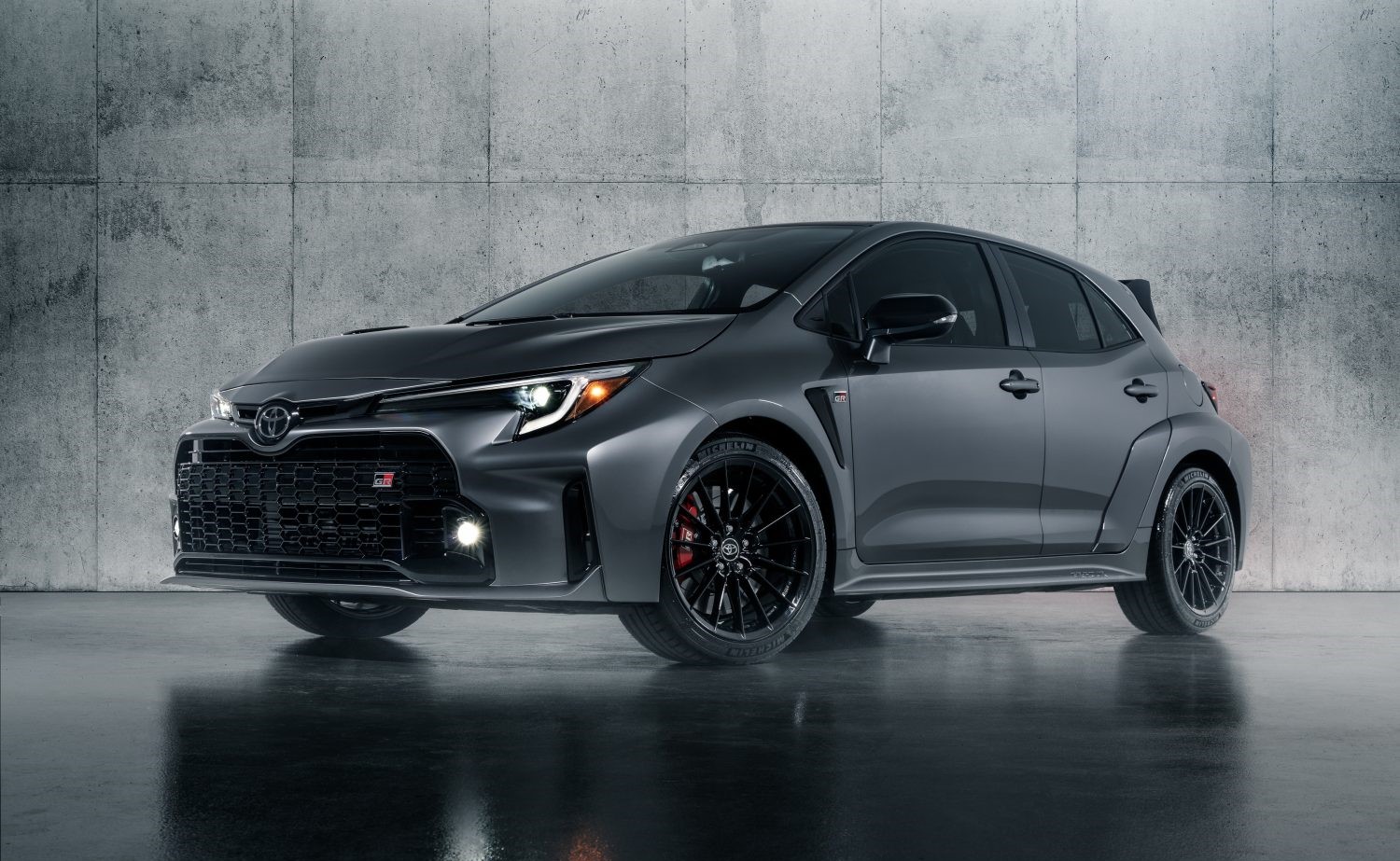
The Toyota Corolla has gone through 20 generations, but only now has its appearance seen a noticeable change. Still, the model maintains a fairly classic look.
Toyota is known for being quite conservative when it comes to the exterior design of its vehicles. Yet, this hasn’t stopped the brand from remaining the most in-demand in the world for many years.
The Toyota Corolla is so widespread that it feels like almost everyone has either owned one or knows someone who has.
Since its debut in the early 1970s and spanning over 12 generations, the Corolla remains a symbol of affordable, reliable, and user-friendly transportation. While it may not have the flashiest design, that’s precisely the point—it focuses on practicality and efficiency.
Cost to Drive estimates for the 2025 Toyota Corolla LE 4dr Sedan (2.0L 4cyl CVT) and comparable vehicles are based on driving 15,000 miles annually, with a typical mix of 55% city and 45% highway driving.
The energy cost is estimated at $3.13 per gallon for regular unleaded in North Dakota. Monthly driving costs in North Dakota for the Corolla LE are estimated at $109, compared to $160 for the average midsize car.
Looking ahead, the 2025 Corolla remains mostly unchanged, but a redesign is expected soon. Anticipated updates include refreshed styling, a revamped interior, and more advanced technology to keep up with its growing competition in the compact car segment.
For now, drivers can check out the new-for-2025 FX Special Edition. Built off the SE grade, this version of the Corolla features a rear spoiler, lowering springs, 18-inch black-painted alloy wheels, and blacked-out exterior trim.
Toyota Camry
Another “leading” model from Toyota is the more comfortable and representative Camry. We haven’t yet mentioned that in 2022, the company sold 7.3 million cars globally now is the perfect time to highlight this fact.
It further reinforces the brand’s widespread popularity.In that same year, nearly 606 thousand units of the Toyota Camry were sold.
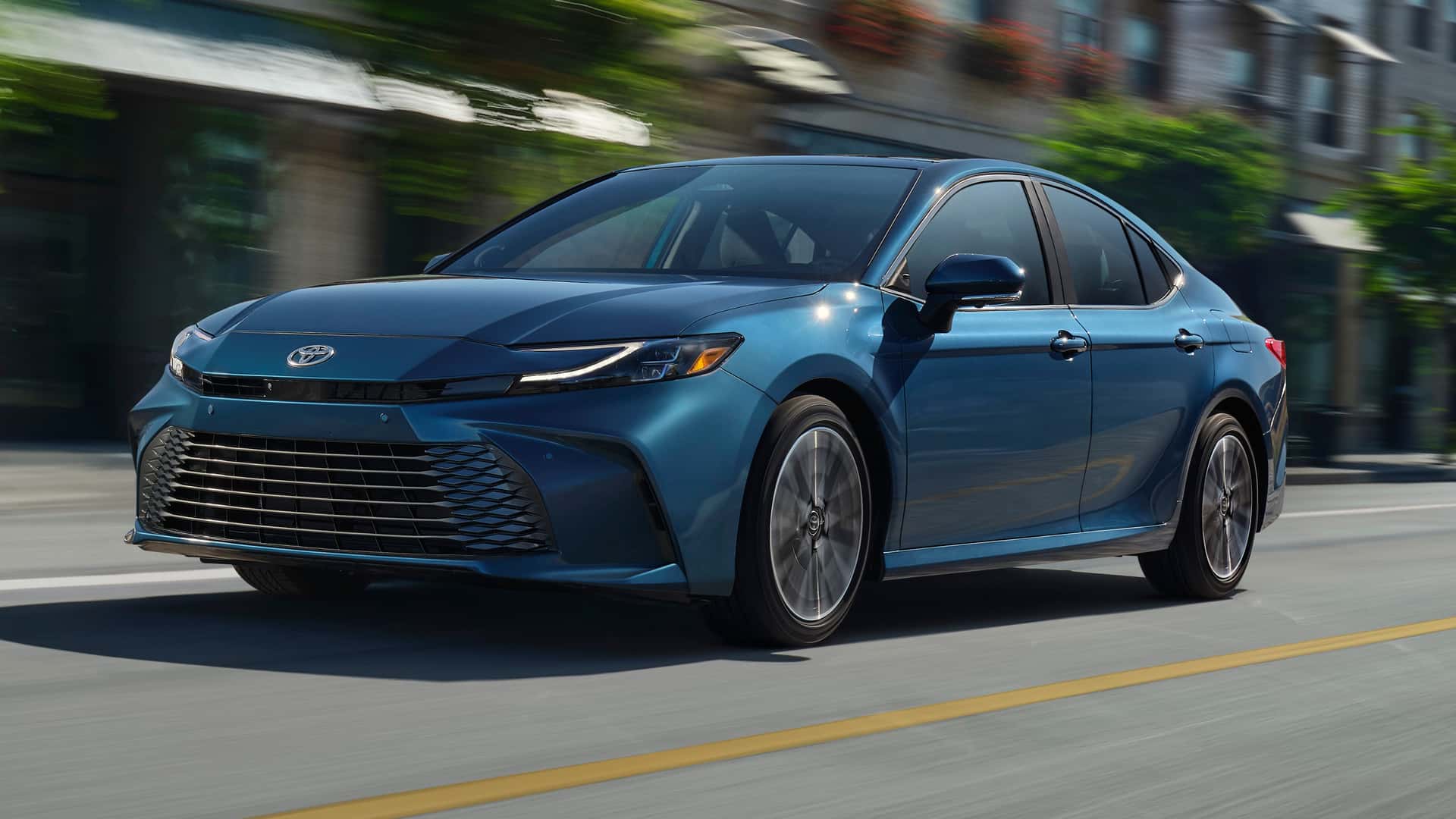
Like the Corolla, the Camry has undergone a restyling, though not a significant one (the changes were primarily made to the interior rather than the exterior). It still remains instantly recognizable on the street.
The 2025 Toyota Camry comes equipped with a wealth of standard technology and even more available features as you move up through the trim levels.
The base models feature a 7.0-inch digital instrument cluster paired with an 8.0-inch infotainment display, both of which offer Apple CarPlay and Android Auto capabilities. Additionally, all models come with wireless charging and a total of five USB-A and USB-C ports.
Upgrading to the XLE or XSE trims brings a larger 12.3-inch digital instrument cluster and a matching 12.3-inch infotainment touchscreen, both of which support wireless Apple CarPlay and Android Auto.
A 10.0-inch head-up display is available as well. Other available features include ambient lighting and a premium nine-speaker audio system from JBL.
For 2025, the Camry is offered in four trim levels. The LE and XLE are comfort-oriented trims, while the SE and XSE models cater to those seeking sportier versions of the sedan.
Inside, the LE trim features an embossed pattern in woven fabric, which Toyota says is inspired by ocean waves. The XLE trim upgrades to microsuede-trimmed seats and includes a power panoramic roof.
The SE and XSE trims come with aerodynamic front-side canards, functional air ducts, and a rear diffuser, while these models also stand out with dual exhaust tips and a rear spoiler.
The XSE trim enhances its style further with a color-matched front grille and a black trunk garnish. The SE rides on 18-inch wheels, while the XSE comes with 19-inch wheels. Additionally, a two-tone roof option is available for the XSE trim.
Honda CR-V
In contrast to the previous Toyota models, the Honda CR-V has seen significant changes in its appearance (and even more so in the interior) throughout its six generations.
However, what remains consistent is its well-balanced blend of price and quality, along with reliability and comfort.
The vehicle not only looks impressive but also offers solid off-road capabilities. The interior is both spacious and comfortable, and in the last two generations, it has also become more modern.
This model has consistently ranked among the top three best-selling cars worldwide for several years. In 2021, sales reached 713 thousand units, while in 2022, they dropped to 449 thousand.
The sharp decline in sales can be easily explained it’s largely due to the increasing demand for electric vehicles.
Even the hybrid version of the Honda CR-V hasn’t been able to prevent the drop in interest in what is, by all measures, a truly outstanding model.

The Honda CR-V has long been a top choice in the compact SUV category, known for its combination of practicality, efficiency, and refinement. It offers more power and better fuel efficiency compared to the nonhybrid CR-V, with only a slight reduction in cargo space due to the placement of the hybrid battery.
Standard front-wheel-drive models are rated by the EPA to achieve an impressive 40 mpg combined, which is remarkable for a vehicle that provides ample passenger and cargo space. The all-wheel-drive configuration also delivers strong efficiency, achieving a 37 mpg combined rating.
The hybrid powertrain is standard across all versions of the CR-V that feature “Sport” in their name, and the CR-V Hybrid lineup includes the Sport, Sport-L, and Sport Touring trims. As one of the best in its segment, the Honda CR-V Hybrid has secured a spot on our Editors’ Choice list for 2025.
There are no significant changes to the 2025 CR-V Hybrid lineup. The pricing for the 2025 Honda CR-V Hybrid starts at $36,045, with higher trims reaching up to $42,495 depending on options.
The Sport trim starts at $36,045, the Sport-L is priced at $39,045, and the fully-loaded Sport Touring model starts at $42,495. While the Sport Touring model offers a wealth of features, its higher price might not be easy to justify.
We recommend the front-wheel-drive Sport-L trim, which provides a good balance of features compared to the Sport trim while maintaining a fuel-efficient rating of 40 mpg combined.
All-wheel drive is available for an additional $1,500 on the Sport and Sport-L trims and comes standard on the Sport Touring model, but it drops the EPA combined fuel economy rating to 37 mpg.
Under the hood, the CR-V Hybrid is powered by a 2.0-liter four-cylinder engine paired with two electric motors, producing a total of 204 horsepower—14 more than the 190 horsepower of the nonhybrid model. This powertrain delivers a smooth and quiet driving experience, although it isn’t especially quick.
The Sport Hybrid is available with either front- or all-wheel drive, while the Sport Touring Hybrid comes with all-wheel drive as standard.
Although the CR-V Hybrid may not offer the same handling excitement as some competitors like the Mazda CX-50 and Volkswagen Tiguan, it provides a comfortable ride with enough performance to keep it from feeling dull.
At our test track, the Sport Touring Hybrid reached 60 mph in 7.9 seconds, which is average for the compact SUV class. When it comes to towing, the CR-V Hybrid can handle up to 1,000 pounds when equipped with optional towing accessories, which is 500 pounds less than the nonhybrid version.
In terms of fuel efficiency, the most fuel-efficient models in the CR-V Hybrid lineup are the front-wheel-drive Sport and Sport-L trims, which achieve 43 mpg in the city and 36 mpg on the highway.
Toyota RAV4
Once again, Toyota makes the list this time with the compact and lightweight all-wheel-drive crossover, the RAV4.
This stylish vehicle has been in demand almost since its introduction, but it reached peak popularity in recent years. In 2020, nearly 915 thousand units were sold; in 2021 965 thousand; and in 2022 654 thousand.
Once again, the rising demand for electric vehicles played a part in this decline, even though modern RAV4 models are also available with a hybrid engine.
It’s worth noting that production of the model began in 1994, and since then, it has undergone substantial changes. Today, it stands as a refined and fairly powerful car that can serve both as a business-class vehicle and a practical family car.
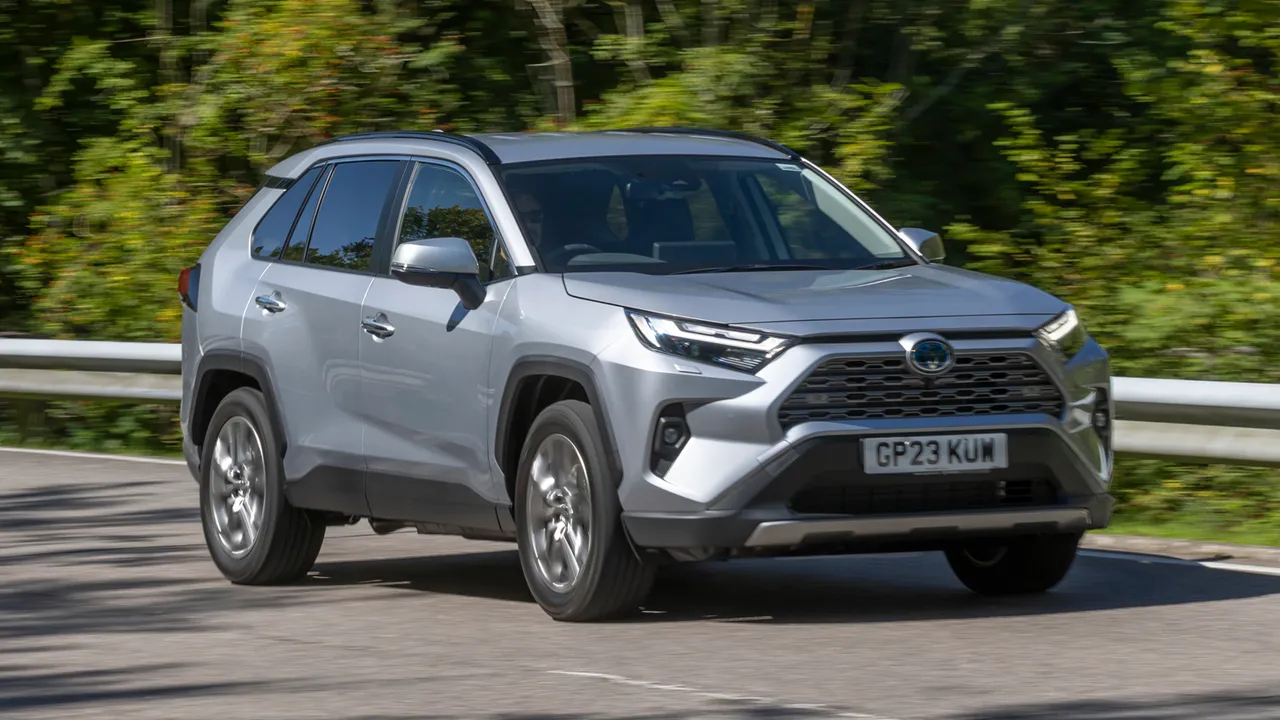
The Toyota RAV4, one of the oldest names in the compact crossover market, is nearing the end of its fifth generation. Despite this, it remains one of the most popular vehicles on the road, with its presence unmistakable across the United States.
The RAV4 comes in various versions, including a gas-powered model with 203 horsepower, a hybrid offering 218 hp and better fuel efficiency, and a plug-in hybrid that produces 302 hp and offers 42 miles of electric range. While it’s not as sporty as the Mazda MX-50, and the Honda CR-V presents a similar practical alternative, both of these rivals also offer hybrid versions.
With ample space, excellent fuel economy, solid safety ratings, and a range of trims to meet nearly every need, the 2025 Toyota RAV4 continues to compete well against newer rivals. However, with rumors swirling about the upcoming sixth generation, is now the right time to buy?
For 2025, after speculation about a possible sixth-generation model, the Toyota RAV4 arrives with no major updates. The vehicle remains fresh, thanks to a 2023 facelift, but the model lineup has been slightly trimmed.
The TRD-Pro and Adventure trims have been removed, and the Prime trim has been rebranded as a more straightforward plug-in hybrid.
A minor change is that the Toyota badge on the remaining trims no longer features blue accents, but this is the only noticeable difference. It’s expected that a fully redesigned RAV4, along with its hybrid variants, will be available next year.
Ford F-Series
Ford pickups perform well in global markets, but in their home country, the USA, they experience absolutely massive demand.
And it’s no surprise: this is a powerful SUV with a comfortable interior that functions equally well as a city vehicle and a reliable “workhorse.” The F-150 model is especially favored.
Among all full-size Ford pickups, it stands out as the true leader. This is due to its consistent placement among the top three best-selling vehicles both globally and in the U.S. over the past several years.
In 2021, 851 thousand units of the F-Series were sold, while in 2022, the number dropped to 767 units. The Explorer and Ranger models follow, but with a noticeable gap.

The 2025 Ford F-150 offers a variety of body styles and bed lengths to suit different needs. While the XLT model is a step up from the basic XL work truck, the Lariat provides additional luxuries that make it more appealing.
Standard features on the Lariat include automatic full-time four-wheel drive and the reliable 5.0-liter V-8 engine. However, the twin-turbo 3.5-liter V-6 engine is available as a no-cost option.
While the price of the Lariat may be out of reach for some buyers, it provides the best combination of features and affordability. It’s worth noting that the 2025 Platinum Plus will be available later, with pricing to be announced.
Engine options for the 2025 F-150 include a range of choices, starting with a 325-hp twin-turbocharged 2.7-liter V-6 and going up to a 400-hp 5.0-liter V-8, a 400-hp twin-turbo 3.5-liter V-6, and a 430-hp hybrid powertrain that combines a twin-turbo 3.5-liter V-6 and a 47-hp electric motor.
All engines are paired with a 10-speed automatic transmission. The hybrid version of the F-150 is especially notable for its impressive driving range, with the EPA estimating up to 704 miles per tank. The hybrid model can also power an onboard generator, making it useful for job sites or during power outages.
Buyers can choose from rear-wheel or four-wheel drive for any of the available powertrains. During our test drive, we noted a smooth ride and favorable handling. Higher-spec models like the King Ranch feature a variable-assist steering system that improves handling at lower speeds for a more agile driving experience.
For off-road enthusiasts, the Tremor model stands out with its 33-inch all-terrain tires, enhanced suspension, locking rear differential, and a four-wheel drive transfer case sourced from the F-150 Raptor.
On the test track, the 2025 F-150 Hybrid accelerated to 60 mph in just 5.0 seconds. For comparison, the 2024 F-150 Tremor with the 5.0-liter V-8 took 6.0 seconds to reach 60 mph, while a previous Tremor with the nonhybrid 3.5-liter EcoBoost V-6 completed the 0-60-mph run in 5.3 seconds.
The F-150 offers impressive towing and payload capabilities. Models equipped with the optional 400-hp twin-turbo 3.5-liter V-6 engine can tow up to 13,500 pounds. The 5.0-liter V-8 engine allows for a maximum towing capacity of 13,000 pounds, while the hybrid version can tow up to 12,700 pounds.
The F-150’s maximum payload capacity is 2,455 pounds, ensuring it remains competitive with rivals like the Chevrolet Silverado 1500, GMC Sierra 1500, and Ram 1500.
Fuel economy is another important consideration for buyers. The EPA estimates that the F-150 with the turbocharged 2.7-liter V-6 engine will achieve up to 19 mpg in the city and 25 mpg on the highway. The twin-turbo 3.5-liter V-6 engine is rated for up to 17 mpg city and 25 mpg highway.
The hybrid model offers the best efficiency, with estimates of up to 22 mpg city and 24 mpg highway. In our real-world testing, the hybrid achieved 20 mpg on our 75-mph highway fuel-economy route, while the Tremor model with the twin-turbo 3.5-liter V-6 returned 19 mpg.
Best Cars that Nobody Buys
Build a great car, and it deserves to find success. But that doesn’t necessarily mean it will. The U.S. auto market both in the past and today is filled with examples of outstanding vehicles that consumers have overlooked.
In an attempt to correct that oversight, or at least shine a light on some underrated gems, we present our list of today’s best cars that nobody buys.
We believe that each of these ten sedans, coupes, sports cars, and wagons truly deserves stronger sales much stronger.Yet, for a variety of reasons, they’ve been unfairly passed over.
If you follow our advice and choose one for yourself, you’ll not only be driving an exceptional vehicle, but you’ll also enjoy the rare benefit of not seeing your car everywhere. Although, in a truly fair market, you would.
BMW 3-Series Sports Wagon
It’s only appropriate that this list begins with a station wagon. Like most car enthusiasts, we have a deep appreciation for wagons an enthusiasm that stands in stark contrast to the American public’s general disregard for them.
With a lower center of gravity compared to SUVs and crossovers, wagons deliver the handling prowess of a sports sedan, while offering the added practicality of increased cargo space.
Yet, even when presented with a standout like the BMW 3-Series Sports Wagon, American buyers tend to stay away in large numbers, gravitating instead toward the X1 which outsells the 3-Series wagon by more than 5 to 1.

BMW offers the longroof 3-Series in two versions: the gasoline-powered 328i and the diesel-powered 328d. Both come exclusively with xDrive all-wheel drive.
The 328i features BMW’s well-known 2.0-liter turbocharged four-cylinder engine, delivering 240 horsepower and 255 lb-ft of torque.
Paired with an eight-speed automatic transmission the only option available it can accelerate from 0 to 60 mph in 5.8 seconds.
Meanwhile, the 328d uses a turbo-diesel engine of the same size, prioritizing fuel economy with EPA ratings of 31 mpg city and 43 mpg highway (the latter figure verified by our own long-term testing). In every way but sales, this wagon is a winner.
Cadillac ATS
Change is often difficult to recognize and even more difficult to accept. That certainly seems true for Cadillac.
The brand has moved away from its traditionally flashy, oversized luxury aesthetic an image that was once highly profitable and widely popular.
Following a period of identity realignment, Cadillac has reemerged with the ATS and CTS, offering vehicles that arguably out-BMW BMW.
In both sedan and more notably coupe form, the ATS drives with a balance and agility that used to be synonymous with the BMW 3-Series.
That’s not to say the ATS is flawless: the CUE infotainment system can be frustrating, and the rear seat is cramped.

But for years, enthusiasts tolerated similar complaints about BMW’s iDrive system and backseat space issues that have since improved in newer models. So why can’t they extend the same grace to the ATS?
The problem doesn’t appear to be that buyers can’t accept the car’s minor shortcomings in exchange for superb driving dynamics.
Rather, it seems many aren’t willing to give Cadillac a second look at all. The ATS represents a dramatic departure from Cadillac’s historical image it’s a complete transformation.
Unfortunately, as shown by the underwhelming sales of this otherwise excellent vehicle, it’s a change that a lot of buyers still seem reluctant to embrace.
Cadillac CTS
In a fair and just world, every buyer of a BMW 5-Series would instead be driving a brand-new Cadillac CTS. In fact, even many 3-Series drivers would benefit from visiting a Cadillac dealership.
The CTS checks every box for what one should expect in a sporty sedan.
It’s lightweight coming in well under 4000 pounds in a segment that’s increasingly overweight thanks to a meticulous weight-reduction initiative that didn’t just trim pounds or ounces, but individual grams.
The electrically assisted steering delivers a sports-car-like feel, the optional magnetorheological dampers provide remarkable chassis control, and the Vsport’s twin-turbo V-6 with 420 horsepower and 430 lb-ft of torque propels the taut chassis with confidence and grace.
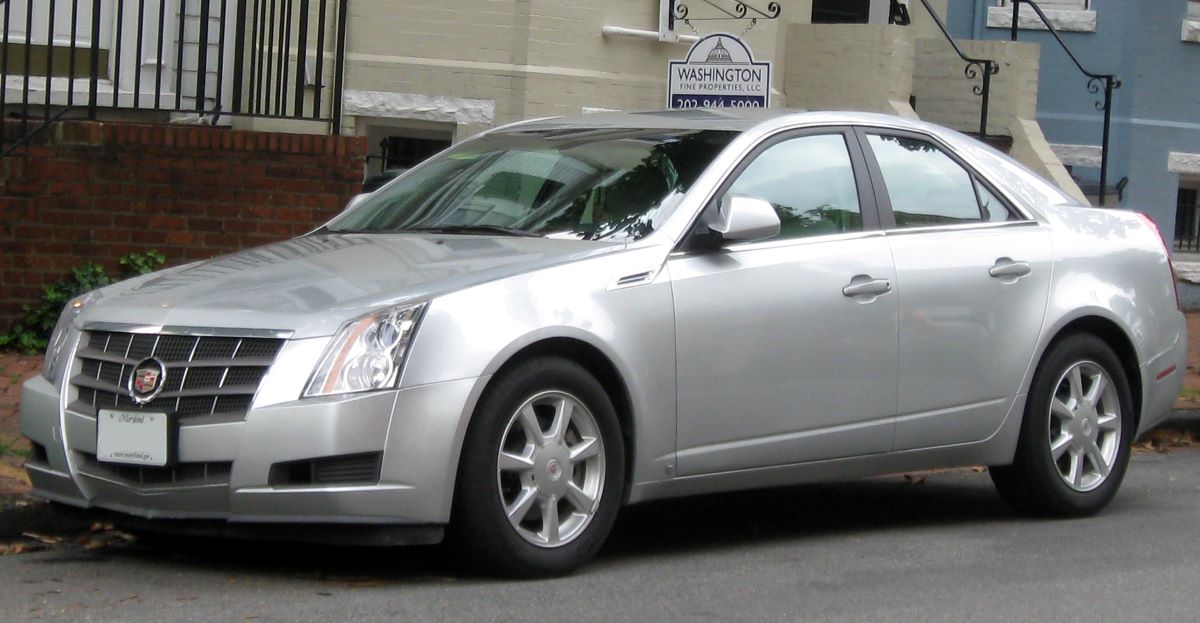
Cost-conscious buyers can opt for the naturally aspirated 3.6-liter V-6 or even the surprisingly capable (though less traditionally Cadillac-like) 2.0-liter turbocharged four-cylinder.
For those who take their commute in Simpson racing shoes, the wait is almost over for the ludicrous 640-horsepower CTS-V, expected later this year.
That supercharged, Nürburgring-conquering machine a four-door Corvette Z06 in spirit is Cadillac’s ultimate answer to the Germans.
While BMW continues to dilute its M badge on bloated crossovers, Cadillac has made the CTS-V a pure, performance-focused machine like never before.
So why do otherwise-smart buyers continue to choose the roundel over the now wreath-less crest? We’re stumped.
Before the arrival of the CTS in 2003, the 1976 Cadillac Seville held the title of Cadillac’s smallest sedan, as well as its most expensive. It could arguably be considered a modern-day classic, but Cadillac’s subsequent efforts to create smaller, entry-level models didn’t meet with the same success.
The 1982 Cimarron, which was based on the Chevrolet Cavalier, and the 1997 Catera, which was a modified version of the German Opel Omega, are perhaps best forgotten. When the 2003 CTS debuted, it aimed directly at well-established competitors like the BMW 3 Series, with its sharp-edged styling designed to turn heads.
However, the quality, appearance, and ergonomics of its interior failed to impress. In 2008, a more refined second-generation CTS sedan was introduced, accompanied by a stylish wagon and a sleek two-door coupe, which completed the lineup.
The third generation of the Cadillac CTS arrived as a 2014 model, now available only as a sedan. This version grew larger and more expensive, as Cadillac’s ATS took over as the brand’s entry-level model. By 2020, the CTS was replaced by the CT5, a new sedan of similar size and design.
Ford Flex
“No one ever went broke underestimating the taste of the American public.” That slightly reworded quote from H.L. Mencken has long served as an unofficial motto for the auto industry.
And there may be no clearer proof of that than what you’ll see at a Ford dealership, where the Flex’s sales trail the Explorer’s by nearly 9 to 1.
From a design standpoint, the Flex looks like a 1965 Ford Country Sedan blended with elements of a Jeep Grand Wagoneer and a modern Range Rover resulting in a vehicle that clearly doesn’t follow the crowd of cookie-cutter SUVs.
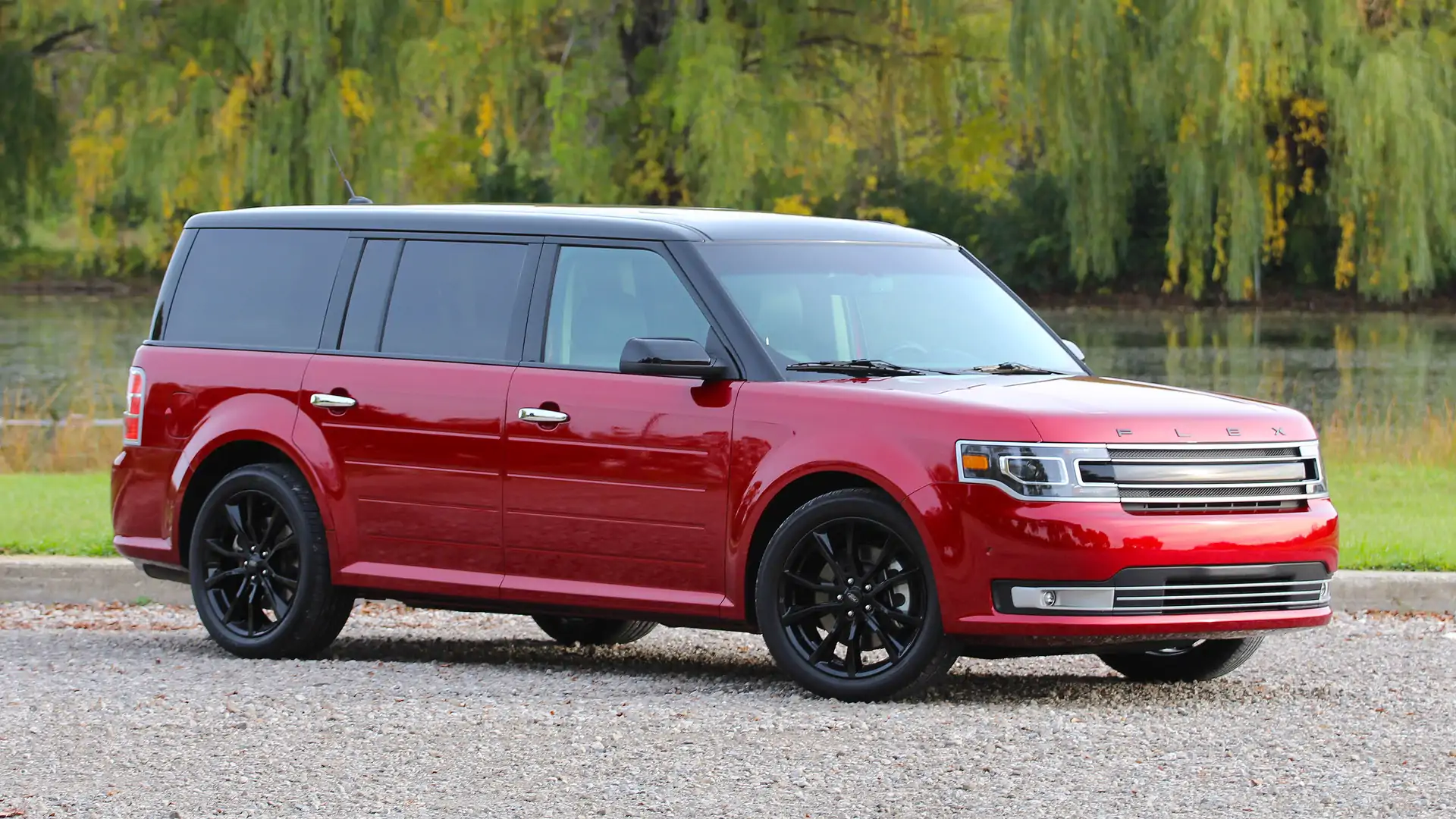
Functionally, the Flex hits all the right notes. It’s quiet, spacious enough for six or seven passengers and their gear, and with the available 365-horsepower EcoBoost V-6, it’s among the most powerful choices in its category.
Sadly, Ford never seemed to truly understand this vehicle starting with its awkward name and an ill-conceived ad campaign that bizarrely targeted nightlife-loving hipsters for what is, in reality, a practical family hauler.
Once the Explorer adopted a similar configuration, its greater name recognition spelled doom for the Flex. Still, we’d choose the sleek and distinctive Flex over the bloated, oversized Explorer any day of the week.
The quirky 2019 Ford Flex is Ford’s response to those looking for a contemporary take on the classic station wagon. While it’s an older model, it remains an attractive SUV amidst a crowd of similarly shaped family vehicles, including the spacious Ford Explorer.
The Ford Flex offers two V-6 engine options, both displacing 3.5 liters and paired with a six-speed automatic transmission.
The base engine delivers 287 horsepower and is available with either front- or all-wheel drive. The higher-end Limited trim includes an optional twin-turbo V-6 that produces a strong 365 horsepower and comes standard with all-wheel drive.
During testing, the turbocharged Limited accelerated from 0 to 60 mph in just 6.2 seconds. Because it sits lower to the ground compared to a typical SUV, the Flex provides a driving experience that feels more like a car than a traditional SUV.
The Flex’s interior can be outfitted with plenty of luxury features, though few are included as standard. For instance, the base SE model lacks a touchscreen infotainment system.
The Ford Sync 3 infotainment system, which includes Apple CarPlay and Android Auto compatibility, comes standard on the mid-range SEL and top-tier Limited trims. The Flex is designed to accommodate seven passengers across three rows of seats, offering ample space.
When both rows of rear seats are folded flat, the Flex becomes a cargo-hauling champion with a large, flat load floor. Optional features include adaptive cruise control, forward-collision warning, and a 12-speaker Sony audio system, although more modern competitors offer more advanced driver-assistance technologies.
Jaguar XJ
The world of full-size luxury sedans seems to be experiencing an unfortunate design crisis. The Audi A8 has a front end reminiscent of an industrial air vent, the BMW 7-Series appears swollen, and the Lexus LS well, let’s not go there.
That’s why we nod in approval every time a Jaguar XJ glides past. Its striking, athletic design delivers the visual appeal, while its lightweight aluminum construction and sport-tuned ride provide the dynamic performance to back it up.
Opt for the long-wheelbase version and you’ll enjoy executive-level rear seat space without sacrificing much of the agility found in the standard-length model.
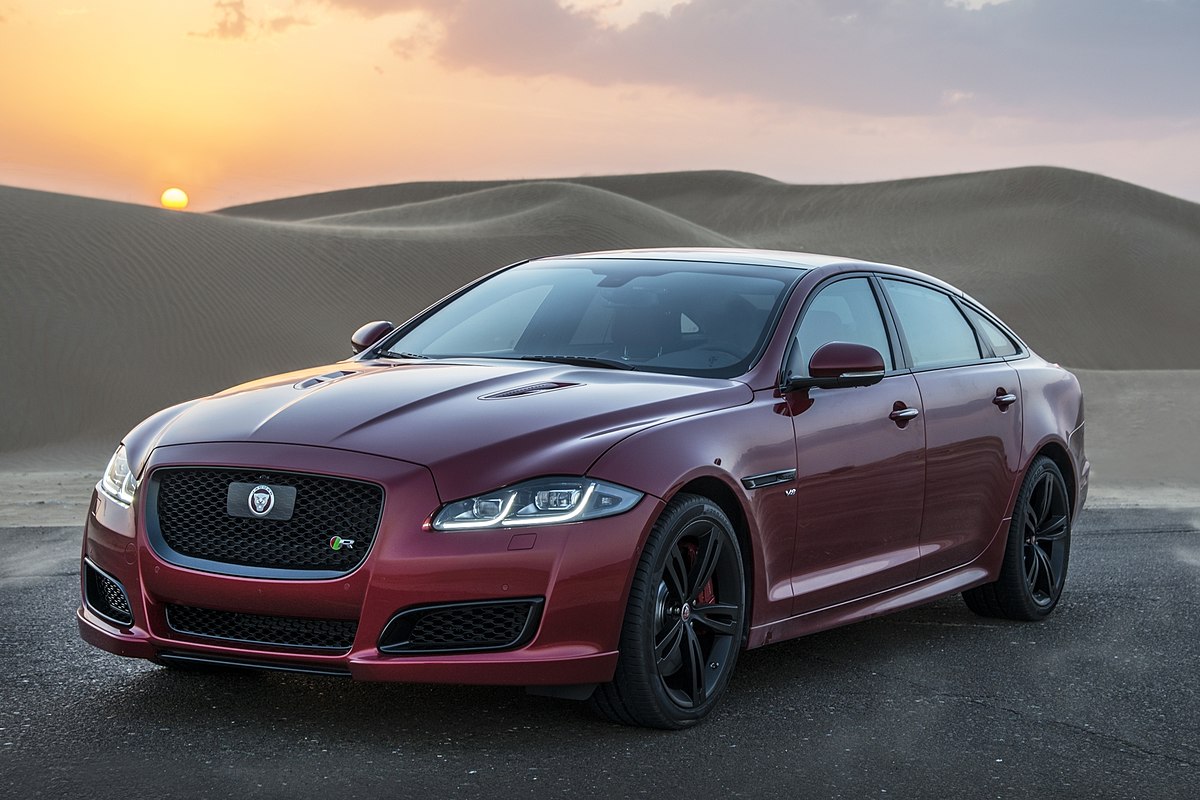
And for those who want to go all out, there’s the 550-horsepower XJR. It offers remarkable agility particularly for the long-wheelbase version that seems to defy both physics and logic.
Jaguar’s sales figures don’t come close to matching those of the German brands, perhaps in part due to lingering concerns about reliability.
But that may actually be a hidden strength: in a sea of “bought it with my branch-manager bonus” German luxury sedans at the country club valet, the Jaguar XJ stands out like a set of sculpted abs in a room full of beer bellies.
And when you consider that it comes in over $20,000 cheaper than a comparable Mercedes-Benz S-Class, the sleek and muscular XJ even qualifies as a bargain.

